Understanding the achievement and the message of Hyundai Motor Group having a European Technical Center at the Nürburgring might be easier if we look at what Hyundai has done in the US.
In 1985 Hyundai Motor America set up shop in California. The first car sold here was the 1986 Excel, a rebodied Mitsubishi Mirage with a Hyundai interior treatment. This was the first Mirage, which also served as the Chrysler Colt in hatchback form and circled back as the Mitsubishi Precis so Mitsu could get around Japanese automakers' voluntary export quotas of the time. The Excel made such an impression on reviewers and buyers that in Car and Driver's 1986 review they wrote that "'astounding' is not too strong word" to describe the company's progress, and said, "Our guess is that Hyundai will be a major force in the US car market almost from the moment it opens its doors."
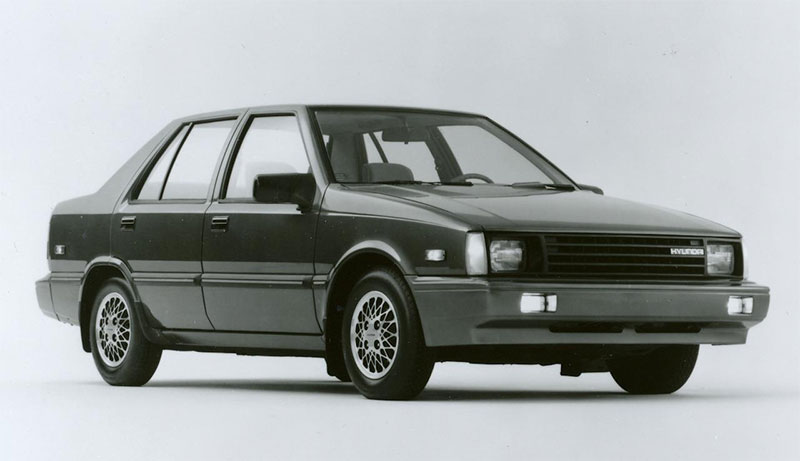
Three years on, buyers began to discover that one of the things the Excel did best was disintegrate. It's been called "fantastically crappy," Popular Mechanics would later say the Excel "deserved to fail," and they decomposed so thoroughly that you'll have a hard time finding one in any junkyard. Buyers got so allergic to the Flying H badge that sales declined for ten consecutive years. By 1999, when Hyundai's model range was four times larger than it had been in 1986 – Accent, Elantra, Sonata, Tiburon – the brand sold just 90,217 cars in the US.
Two important things happened around that nadir. In 1998, as a way of reassuring potential customers, Hyundai became the first automaker to introduce a 10-year, 100,000-mile warranty. In 1999, Mong-Koo Chung became the CEO of Hyundai Motor Company, promoted from 11 years as CEO of Hyundai Motor Service, a role that put him in charge of global warranty claims. Having spent all those years of his life wading through that carnage, he swore when he took the top spot that he'd get the situation fixed.
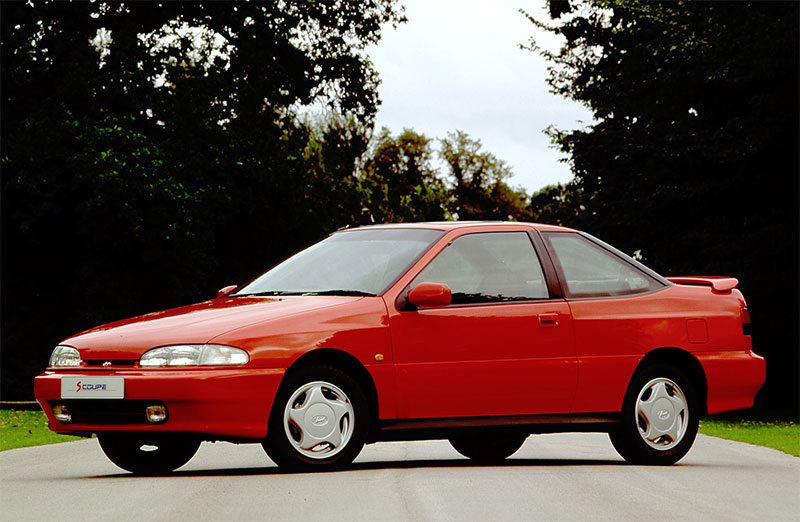
In 2013 Hyundai moved out of the rented garage it had been using at the Nürburgring for two years and into its 6.62-million-euro European Test Center, four floors and 38,987 square feet of workshops, offices, and hospitality areas. It sits high on the hill, closest to and leering above Route 258 that runs next to the Nürburgring itself. The Center's front gate is about 30 steps from the famous Döttinger Höhe gas station on Route 258. On the other side, the Tech Center's elevated positions means that its polished silver tiles loom over every other automaker test center on Gottlieb-Daimler-Strasse below. Stephan Hoferer, the Center's manager and the group manager for durability, fatigue and corrosion, vehicle test, and development, said other carmakers tried to block Hyundai building on that site – and there are regulations against having a building that high placed there – but Hyundai got it done. A theme for the brand.
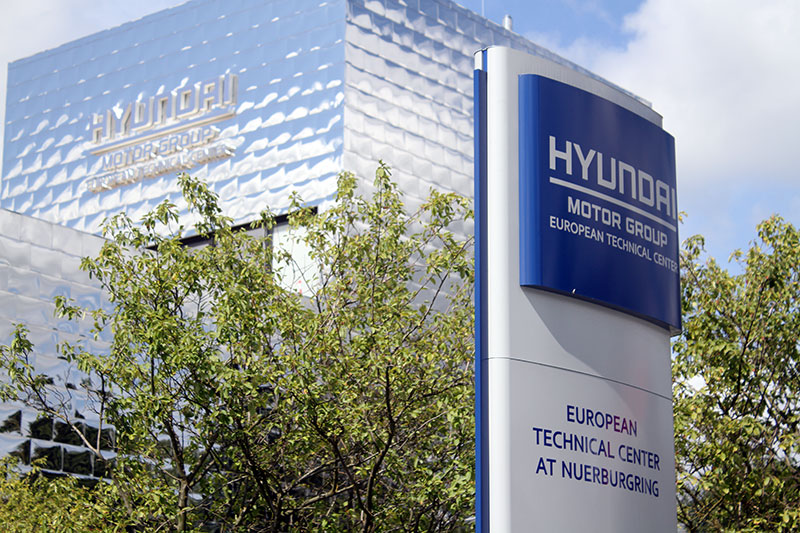
The primary mission of the ETC is advanced durability testing, taking up about 60 percent of its time. Another 20 percent goes to ride and handling testing, the final 20 percent for high performance tests. They keep a fleet of Genesis Coupes on hand, too, for engineers from Korea that come for driver training.
Forty-four carmakers, tire manufacturers, and suppliers make up an industry group that coordinates test days at the 'Ring, renting the track out for 16 weeks per year, about two weeks per month from April to October. Ten to fifteen cars get tested every year, each one driven 480 hard laps around the 13-mile-long Nordschleife – at least 48 of those laps in the rain – said to be equivalent to 112,000 miles of normal driving.
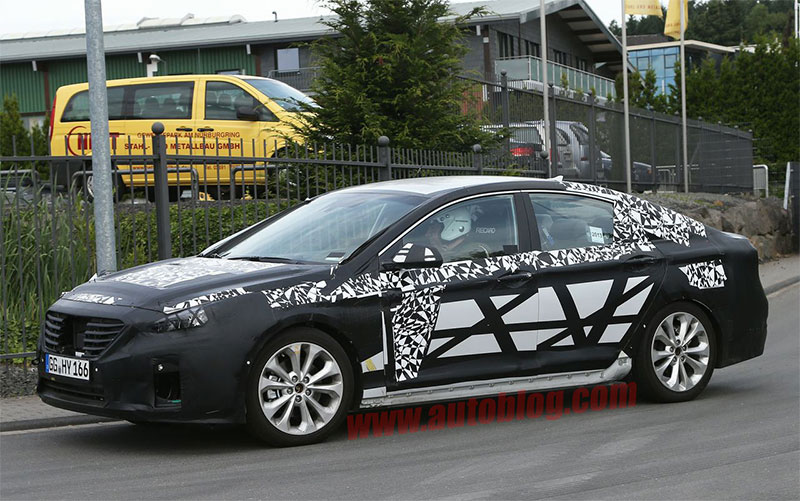
On a typical day the drivers get to the Center by 9:00 AM, then go over the day's program. The first shift runs until lunch, and during the midday briefing the workshop techs will change the car's tires, brake rotors, and brake pads. The afternoon session lasts for another three to four hours, at the end of which the car's tires are changed again. At day's end the engineers download 50 channels of data – out of a possible 20,000 available testing values – and pore over it to prepare for the next day. It is essentially a race operation that never goes racing. The hope is that six weeks of study and concentrated abuse will prepare a car for even more extraordinary injustices in the hands of owners.
We've ridden shotgun on a lot of hot laps. The one during our visit to the Center is one of the most memorable for two reasons. The first had to do with our ride, a US-spec Sonata Eco, the least powerful in the range with a 178-horsepower, 1.6-liter four-cylinder turbo. Hoferer told us the only change made to the car was swapping the 16-inch alloys on 265/65 R16 low-rolling resistance tires for 18-inch wheels on 235/45 ZR18 Michelin Pilot Super Sports because the stock tires weren't up to the hot-lap testing demands being placed on the car. It is a serious change, admittedly – on top of the Recaro race buckets and temporary roll cage – but it doesn't make a suspension any better or make a car's mechanicals last any longer. Other than that, we were told the car was completely stock, down to its brake pads.
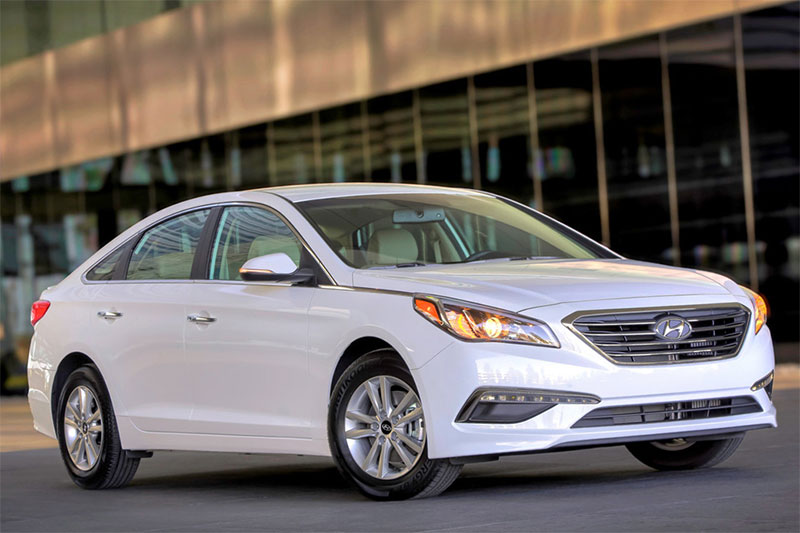
We took every corner at speeds previously considered laughable for a Sonata Eco, even one on 18-inch Michelin Super Sports. The 'Ring isn't just long, its variegated surface is choppy; every hundred meters is waiting to make another barrier-smashing YouTube star of amateur and pro drivers, and great tires will heighten the chances of that if you don't know what you're doing. Except for the few long straights, the sedan spent the entire lap unsettled, about the least comforting demeanor to have during high-speed cornering. It got even more wild when you'd crest a little hill at something close to 90 miles per hour, and as the sedan was still rocking from the landing Steffens would be laying into the next turn. Throughout, the Sonata Eco was a champ, a testament to the average car today being so good that almost no one will ever touch its limits. And while I had my hands locked between my legs to keep them from flailing, Steffens spent the lap looking like he was trying to figure out the lyrics to Disciple's "Game On."
The second reason the lap stayed with us is that we instantly appreciated why carmakers tune their wares on the 'Ring. Any honest carmaker will admit that testing there is partly about cachet, but even the 'Ring isn't famous enough to justify months and millions of euros spent annually just for marketing. A track needs actual worth for that. Nine minutes rollicking your way through a single high-speed lap of it is enough to deduce how good a suspension must to be to keep all four tires on the tarmac in between the curbs.
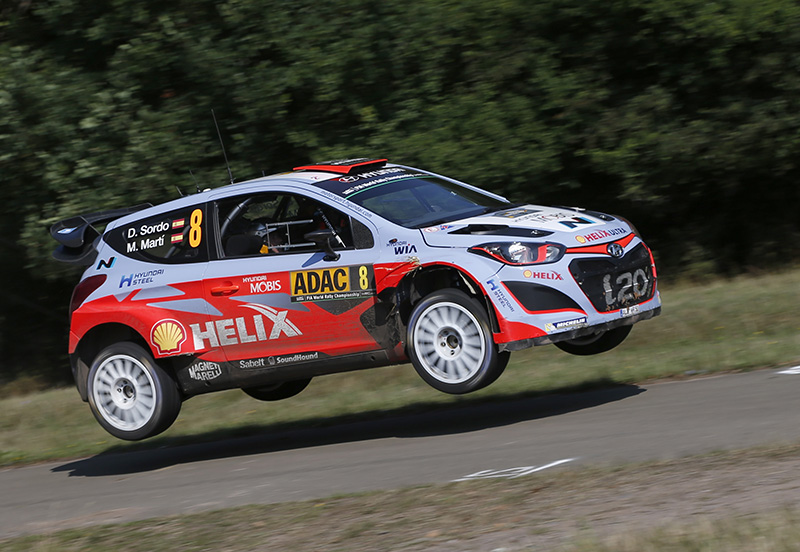
That might seem outrageous when the Genesis Coupe can't make a mark on the market and the Veloster is outsold by the twice-as-pricey Genesis sedan in the US. But only twenty years ago first- and second-generation Excels were still grenading their bits onto interstates throughout the land, a brand exercise so corrosive that 17 years ago the company had to offer the longest warranty in automotive history to get customers back into showrooms. Who then, could have imagined Hyundai now?
In 1985 Hyundai Motor America set up shop in California. The first car sold here was the 1986 Excel, a rebodied Mitsubishi Mirage with a Hyundai interior treatment. This was the first Mirage, which also served as the Chrysler Colt in hatchback form and circled back as the Mitsubishi Precis so Mitsu could get around Japanese automakers' voluntary export quotas of the time. The Excel made such an impression on reviewers and buyers that in Car and Driver's 1986 review they wrote that "'astounding' is not too strong word" to describe the company's progress, and said, "Our guess is that Hyundai will be a major force in the US car market almost from the moment it opens its doors."

That's what happened. The company sold 168,882 Excels in the US in its first year, back when the Ford F-Series led all comers with 544,969 sales, the Chevrolet Celebrity came second of all vehicles with 408,946 sales, the Honda Accord seventh with 325,004 sales. The Excel sold even better the following year, and the year after that.Hyundai sold 168,882 Excels in the US in its first year, back when the Ford F-Series led all comers with 544,969 sales.
Three years on, buyers began to discover that one of the things the Excel did best was disintegrate. It's been called "fantastically crappy," Popular Mechanics would later say the Excel "deserved to fail," and they decomposed so thoroughly that you'll have a hard time finding one in any junkyard. Buyers got so allergic to the Flying H badge that sales declined for ten consecutive years. By 1999, when Hyundai's model range was four times larger than it had been in 1986 – Accent, Elantra, Sonata, Tiburon – the brand sold just 90,217 cars in the US.
Two important things happened around that nadir. In 1998, as a way of reassuring potential customers, Hyundai became the first automaker to introduce a 10-year, 100,000-mile warranty. In 1999, Mong-Koo Chung became the CEO of Hyundai Motor Company, promoted from 11 years as CEO of Hyundai Motor Service, a role that put him in charge of global warranty claims. Having spent all those years of his life wading through that carnage, he swore when he took the top spot that he'd get the situation fixed.

It hadn't been all bad before that. On the corporate side, Hyundai was quick to react to the market, introducing new models and refreshing current ones models more quickly than other carmakers at the time, and selling them at impossible-to-resist prices. Its first in-house engine, the 92-horsepower, 1.5-liter Alpha four-cylinder, went into the 1992 Scoupe. By 2002 Hyundai was the fourth-rated import brand by sales in the US, a position it's held ever since. In JD Power's Initial Quality Survey the brand scored 23rd out of 36 in 2003, climbing to fourth out of 33 in 2015. Vehicle dependability has taken a hit in the last five years, going from 11th out of 36 in 2010 to 26th out of 31 in 2015. Still, in 2014 the IQS ranked Hyundai the leading non-premium brand, the year it sold 725,718 cars here to earn 4.4-percent market share. Not a bad turnaround from about 90,000 cars 15 years before.In 2014 the JD Power Initial Quality Survey ranked Hyundai the leading non-premium brand.
In 2013 Hyundai moved out of the rented garage it had been using at the Nürburgring for two years and into its 6.62-million-euro European Test Center, four floors and 38,987 square feet of workshops, offices, and hospitality areas. It sits high on the hill, closest to and leering above Route 258 that runs next to the Nürburgring itself. The Center's front gate is about 30 steps from the famous Döttinger Höhe gas station on Route 258. On the other side, the Tech Center's elevated positions means that its polished silver tiles loom over every other automaker test center on Gottlieb-Daimler-Strasse below. Stephan Hoferer, the Center's manager and the group manager for durability, fatigue and corrosion, vehicle test, and development, said other carmakers tried to block Hyundai building on that site – and there are regulations against having a building that high placed there – but Hyundai got it done. A theme for the brand.

What Hyundai doesn't look down on is any other Asian carmaker. Although companies like Honda and Toyota use facilities at the 'Ring for testing, no other Asian maker has a purpose-built, dedicated test operation. We stood on the roof of the Center and watched camo'ed Mercedes', Opels, Porsches, Cadillacs, Alfa Romeos, and Bentleys blasting down the Döttinger Höhe straight across the road and realized, "Oh. So this is life at Top Gun for production cars."The primary mission of the ETC is advanced durability testing, taking up about 60 percent of its time.
The primary mission of the ETC is advanced durability testing, taking up about 60 percent of its time. Another 20 percent goes to ride and handling testing, the final 20 percent for high performance tests. They keep a fleet of Genesis Coupes on hand, too, for engineers from Korea that come for driver training.
Forty-four carmakers, tire manufacturers, and suppliers make up an industry group that coordinates test days at the 'Ring, renting the track out for 16 weeks per year, about two weeks per month from April to October. Ten to fifteen cars get tested every year, each one driven 480 hard laps around the 13-mile-long Nordschleife – at least 48 of those laps in the rain – said to be equivalent to 112,000 miles of normal driving.

Hoferer told us that Hyundai and most other automakers at the track use pool drivers provided by companies like Top Line, who might work for Aston Martin in one test session and Hyundai for another. The pilots have long years in the game, many having raced and trained at the 'Ring for more than two decades and who, in street clothes, you would guess for retirement or for saying, "Hello, welcome to Wal-Mart." When a car arrives for testing, a driver does five to ten laps to establish a best lap time. After that, testing is done at 90 to 95 percent of that best time, and drivers can get within a second of a target lap, hour after hour, day after day, for 110 laps per week. Their intimacy with the circuit frees them from having to think about it, so they can focus entirely on feedback from the car.Most automakers at the track use pool drivers who might work for Aston Martin in one test session and Hyundai for another.
On a typical day the drivers get to the Center by 9:00 AM, then go over the day's program. The first shift runs until lunch, and during the midday briefing the workshop techs will change the car's tires, brake rotors, and brake pads. The afternoon session lasts for another three to four hours, at the end of which the car's tires are changed again. At day's end the engineers download 50 channels of data – out of a possible 20,000 available testing values – and pore over it to prepare for the next day. It is essentially a race operation that never goes racing. The hope is that six weeks of study and concentrated abuse will prepare a car for even more extraordinary injustices in the hands of owners.
We've ridden shotgun on a lot of hot laps. The one during our visit to the Center is one of the most memorable for two reasons. The first had to do with our ride, a US-spec Sonata Eco, the least powerful in the range with a 178-horsepower, 1.6-liter four-cylinder turbo. Hoferer told us the only change made to the car was swapping the 16-inch alloys on 265/65 R16 low-rolling resistance tires for 18-inch wheels on 235/45 ZR18 Michelin Pilot Super Sports because the stock tires weren't up to the hot-lap testing demands being placed on the car. It is a serious change, admittedly – on top of the Recaro race buckets and temporary roll cage – but it doesn't make a suspension any better or make a car's mechanicals last any longer. Other than that, we were told the car was completely stock, down to its brake pads.

When we got in and buckled up the four-point harness, Hoferer told us to put our hands between our legs for safety. We suspected it was a joke – we were in a Sonata Eco, after all. But we did as we were told, and we're glad for it. Pulling out of the test car pen with Christian Steffens at the wheel, a fabulously evil sounding Mercedes-AMG GT S to our right and some kind of BMW on our left, by the time we hit the third corner we were yanking on the harness straps to get them as tight as possible. Steffens showed us what a Sonata could do. The result: Mind. Blown.We took every corner at speeds previously considered laughable for a Sonata Eco.
We took every corner at speeds previously considered laughable for a Sonata Eco, even one on 18-inch Michelin Super Sports. The 'Ring isn't just long, its variegated surface is choppy; every hundred meters is waiting to make another barrier-smashing YouTube star of amateur and pro drivers, and great tires will heighten the chances of that if you don't know what you're doing. Except for the few long straights, the sedan spent the entire lap unsettled, about the least comforting demeanor to have during high-speed cornering. It got even more wild when you'd crest a little hill at something close to 90 miles per hour, and as the sedan was still rocking from the landing Steffens would be laying into the next turn. Throughout, the Sonata Eco was a champ, a testament to the average car today being so good that almost no one will ever touch its limits. And while I had my hands locked between my legs to keep them from flailing, Steffens spent the lap looking like he was trying to figure out the lyrics to Disciple's "Game On."
The second reason the lap stayed with us is that we instantly appreciated why carmakers tune their wares on the 'Ring. Any honest carmaker will admit that testing there is partly about cachet, but even the 'Ring isn't famous enough to justify months and millions of euros spent annually just for marketing. A track needs actual worth for that. Nine minutes rollicking your way through a single high-speed lap of it is enough to deduce how good a suspension must to be to keep all four tires on the tarmac in between the curbs.

As with the year 1999, the year 2013 marked another turn Hyundai: its focus on high performance began with the opening of the 'Ring Center and its entry into World Rally Championship, the company's first factory-backed, global motorsports effort. Two years on, the company is heading to this year's Frankfurt Motor Show intent on showcasing its sports car ambitions with the N 2025 Vision Gran Turismo concept, the brand new 2016 i20 WRC challenger, and the RM15 concept that presages possibilities for the N Performance sub-brand. Hoferer told us that high performance testing, currently 20 percent of the Center's activities, will take up more time as Hyundai delves further into its N program and "performance-oriented and racetrack-capable models."Hoferer told us that high performance testing will take up more time as Hyundai delves further into its N program.
That might seem outrageous when the Genesis Coupe can't make a mark on the market and the Veloster is outsold by the twice-as-pricey Genesis sedan in the US. But only twenty years ago first- and second-generation Excels were still grenading their bits onto interstates throughout the land, a brand exercise so corrosive that 17 years ago the company had to offer the longest warranty in automotive history to get customers back into showrooms. Who then, could have imagined Hyundai now?
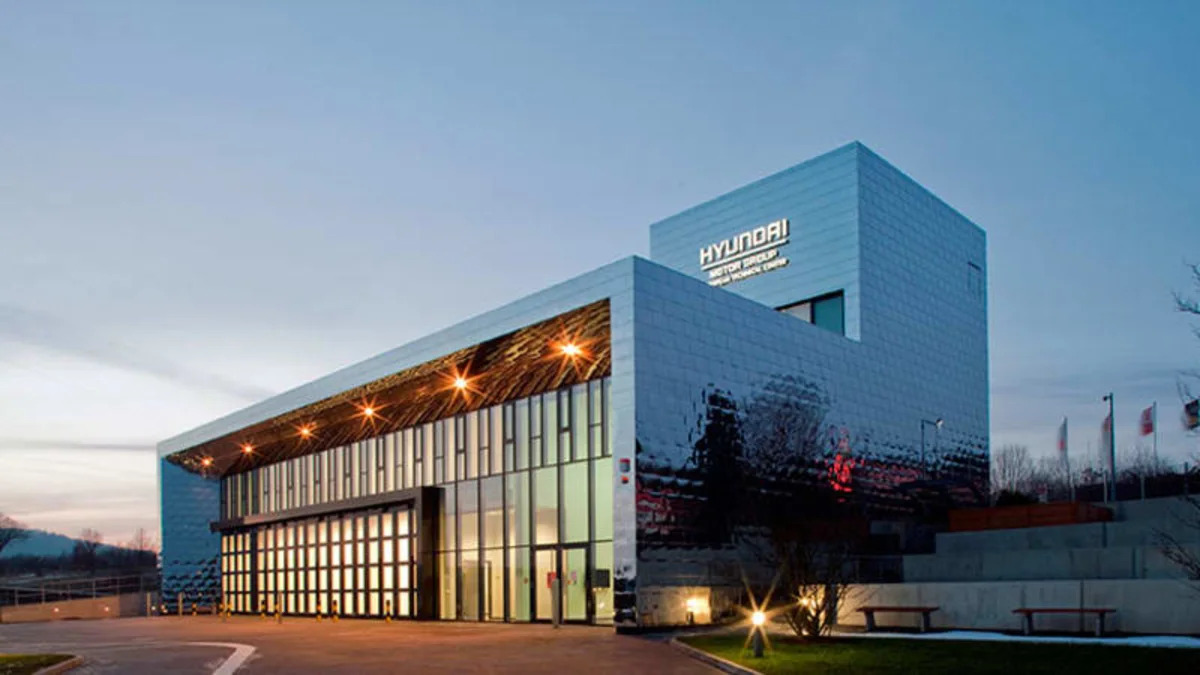

Sign in to post
Please sign in to leave a comment.
Continue